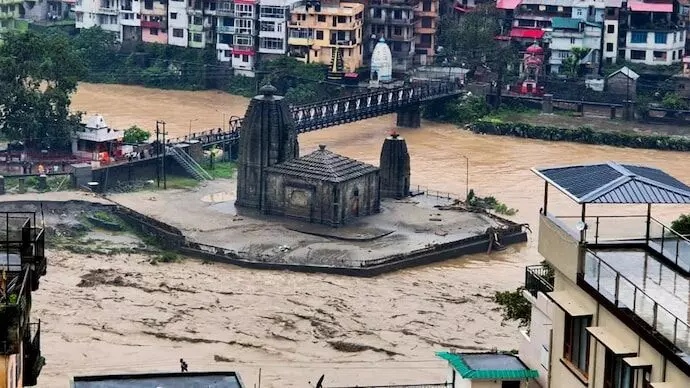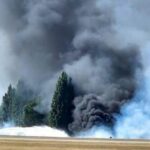
Devastating Impact of Relentless Rainfall
Himachal Pradesh is grappling with one of the worst monsoon crises in recent years. Continuous heavy rains have triggered severe landslides and flash floods, causing widespread destruction across the mountainous state. The relentless downpour has claimed the lives of at least 92 people so far, with the death toll expected to rise as rescue operations continue. The intense rainfall has disrupted daily life and led to massive infrastructure damage, leaving many areas isolated and in urgent need of relief.
Mandi District Faces Severe Crisis
Among the affected regions, Mandi district has been hit the hardest. Torrential rains have led to devastating landslides and flooding, washing away roads and damaging homes. Several villages remain cut off from the rest of the state due to blocked highways and destroyed bridges. Local authorities have described the situation in Mandi as critical, with rescue teams struggling to reach stranded residents. Emergency shelters have been set up to accommodate those displaced by the disaster.
Massive Road Closures Hamper Relief Efforts
Across Himachal Pradesh, a staggering 249 roads have been closed due to landslides, waterlogging, and structural damage. These closures have severely hampered the movement of rescue teams and the delivery of essential supplies such as food, water, and medical aid. Key highways connecting major towns and tourist destinations have been affected, disrupting both local travel and the important tourism sector, which is a vital source of income for the region.
Landslides and Flash Floods: The Twin Threats
The topography of Himachal Pradesh makes it particularly vulnerable to monsoon-related disasters. Heavy rains saturate the fragile soil, triggering landslides that sweep away everything in their path. Flash floods have inundated low-lying areas and riverbanks, submerging homes and agricultural fields. These twin threats have created a cycle of destruction that challenges both the government and local communities in terms of preparedness and response.
Government Response and Rescue Operations
The Himachal Pradesh government has declared a state of emergency in the most affected districts. The National Disaster Response Force (NDRF), state police, and local volunteers are actively involved in search and rescue missions. Helicopters have been deployed to airlift stranded residents and deliver relief materials to inaccessible areas. Authorities are also working to clear blocked roads, but the continuous rainfall complicates these efforts. The government has urged citizens to stay indoors and avoid travel unless absolutely necessary.
Relief and Rehabilitation Efforts Underway
In the wake of the disaster, the state government has announced compensation for the families of the deceased and financial assistance for those whose homes have been damaged. Relief camps are operational, providing shelter, food, and medical aid to displaced people. Various NGOs and volunteer organizations have joined hands with official agencies to accelerate relief distribution and support long-term rehabilitation plans. However, with the monsoon still active, the scale of the crisis remains daunting.
Tourism Sector Takes a Hit
Himachal Pradesh’s economy relies heavily on tourism, especially during the monsoon and summer seasons. The ongoing natural calamity has severely disrupted tourist inflows, with many visitors cancelling or postponing trips due to safety concerns. Tourist hotspots such as Manali, Shimla, and Dharamshala are affected by road closures and waterlogging, impacting local businesses dependent on tourism revenue. The sector faces significant challenges in recovery once the weather stabilizes.
Climate Change and Increasing Vulnerability
Experts suggest that changing climate patterns may be intensifying monsoon rains and increasing the frequency of such disasters in the Himalayan region. Rapid urbanization, deforestation, and unplanned development have further exacerbated the state’s vulnerability to landslides and floods. Environmentalists are calling for sustainable practices, better land-use planning, and improved disaster preparedness to mitigate the impact of future monsoon seasons.
What Lies Ahead for Himachal Pradesh
With the monsoon still active, Himachal Pradesh faces a challenging road ahead. Restoration of infrastructure, rehabilitation of displaced populations, and rebuilding livelihoods will require sustained efforts and coordination between government agencies, communities, and experts. Authorities must balance immediate relief with long-term strategies to enhance resilience against similar natural disasters. For now, the focus remains on saving lives and minimizing further damage as the state weathers this relentless monsoon fury.




































Leave a Reply